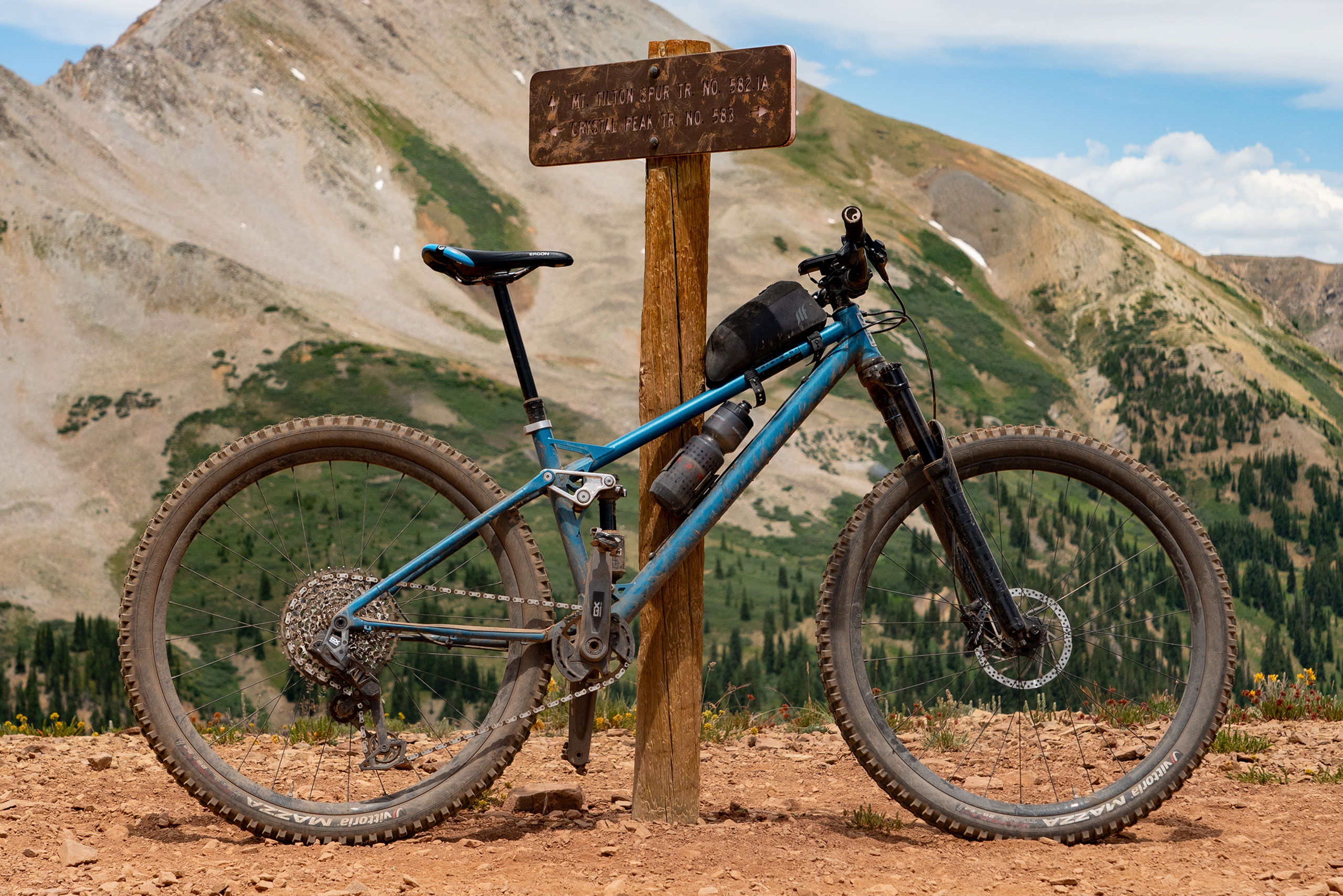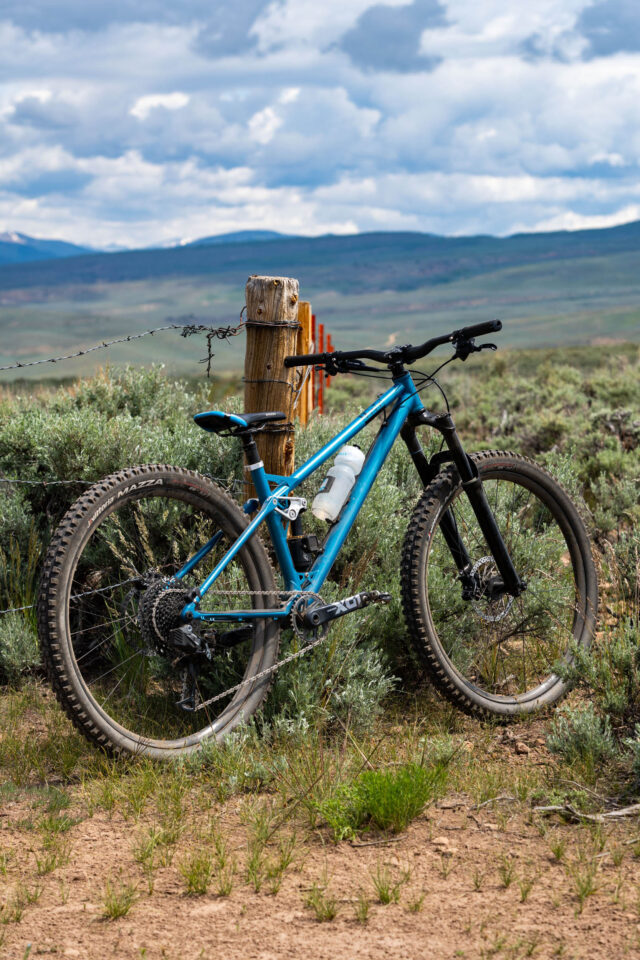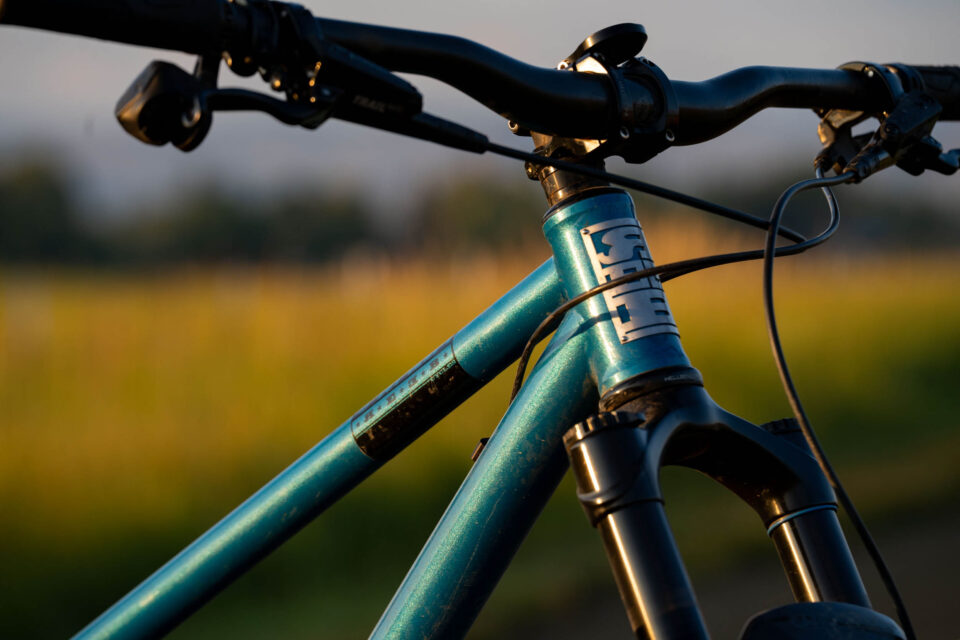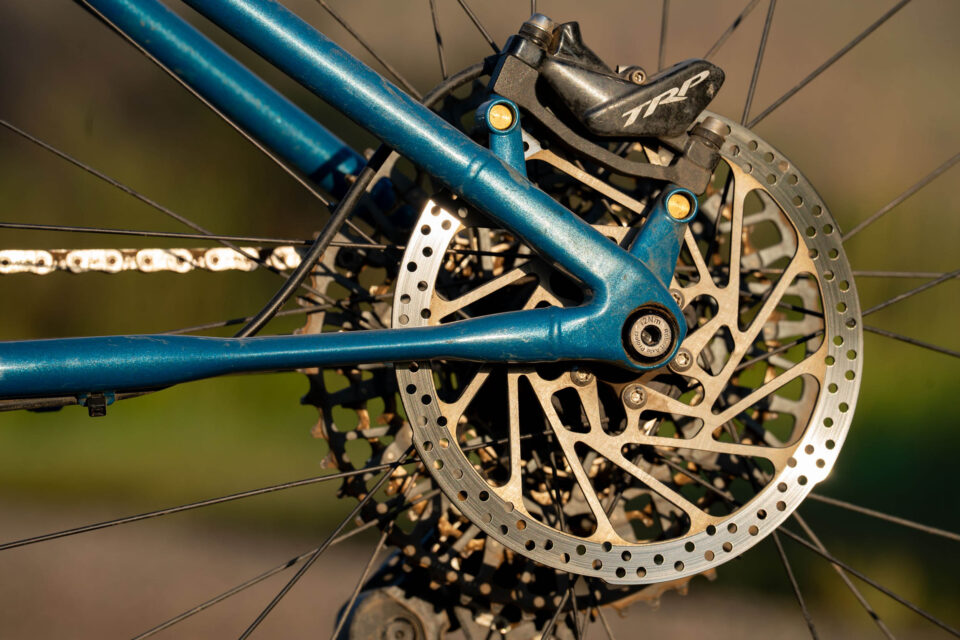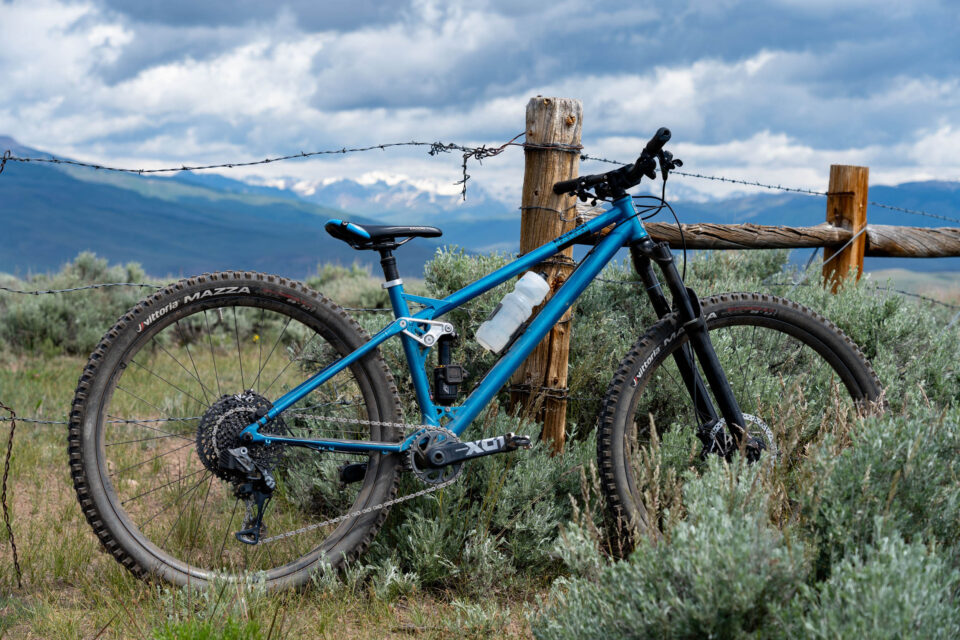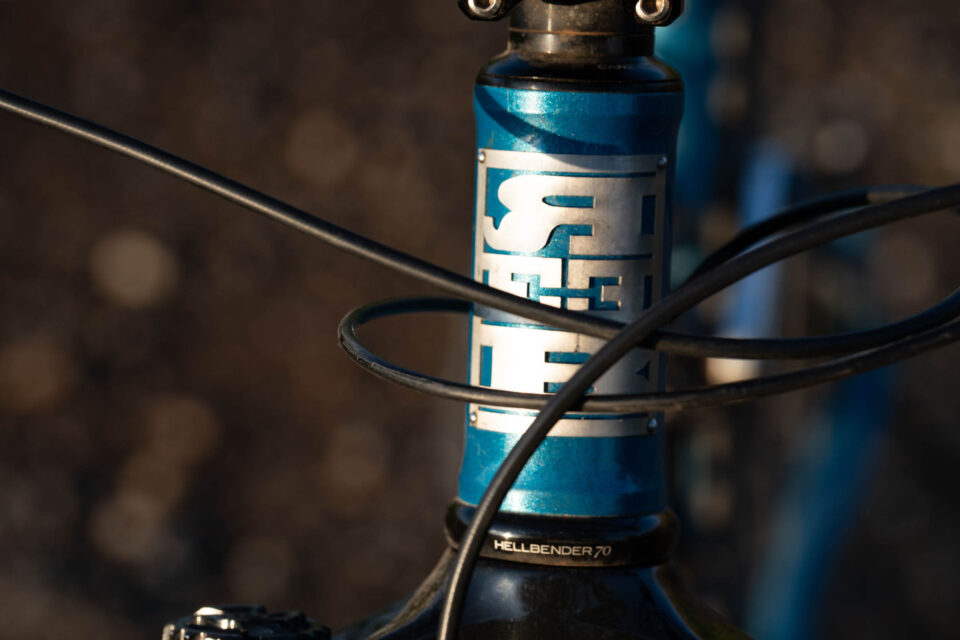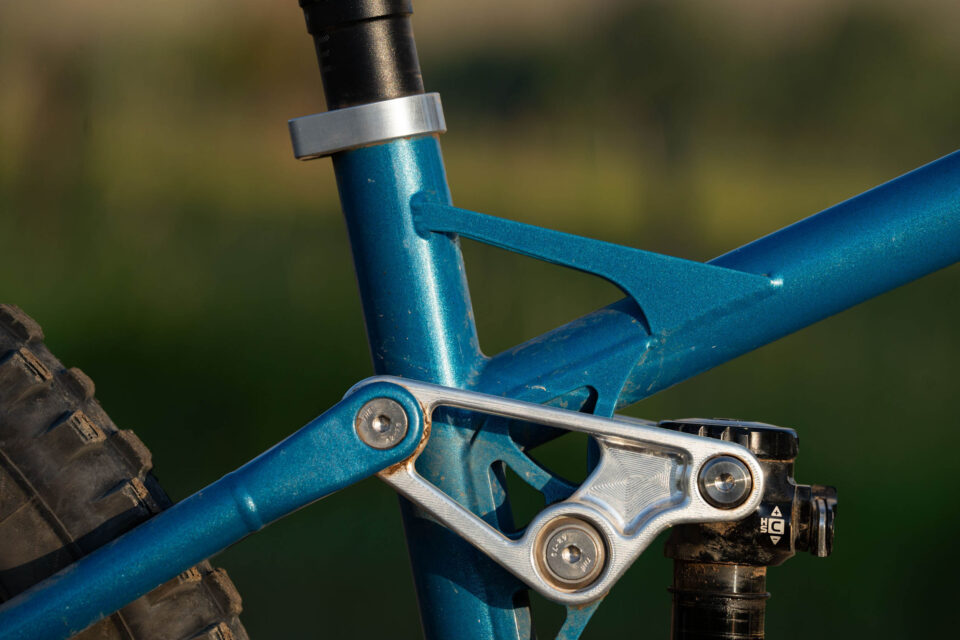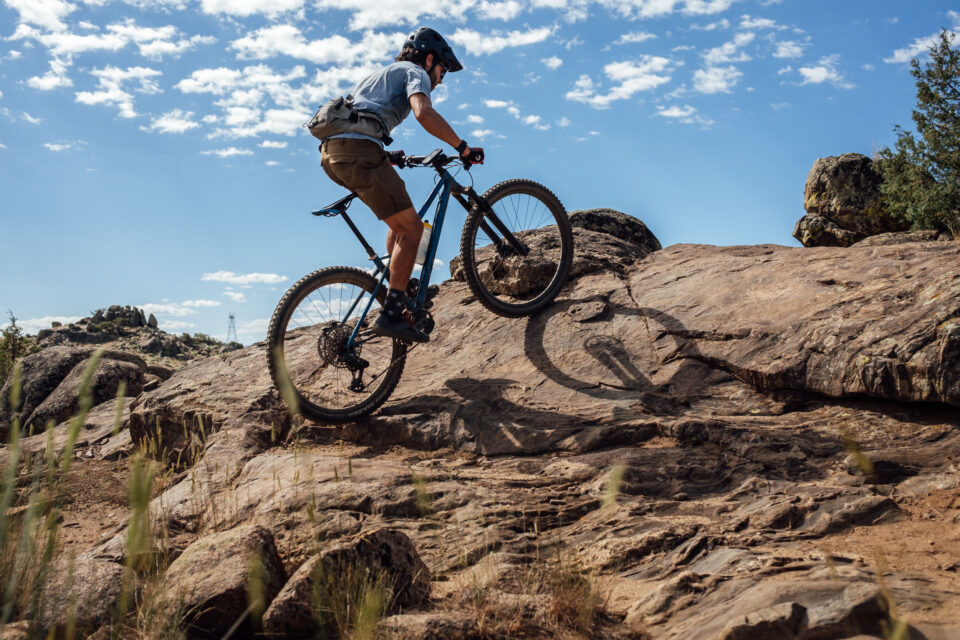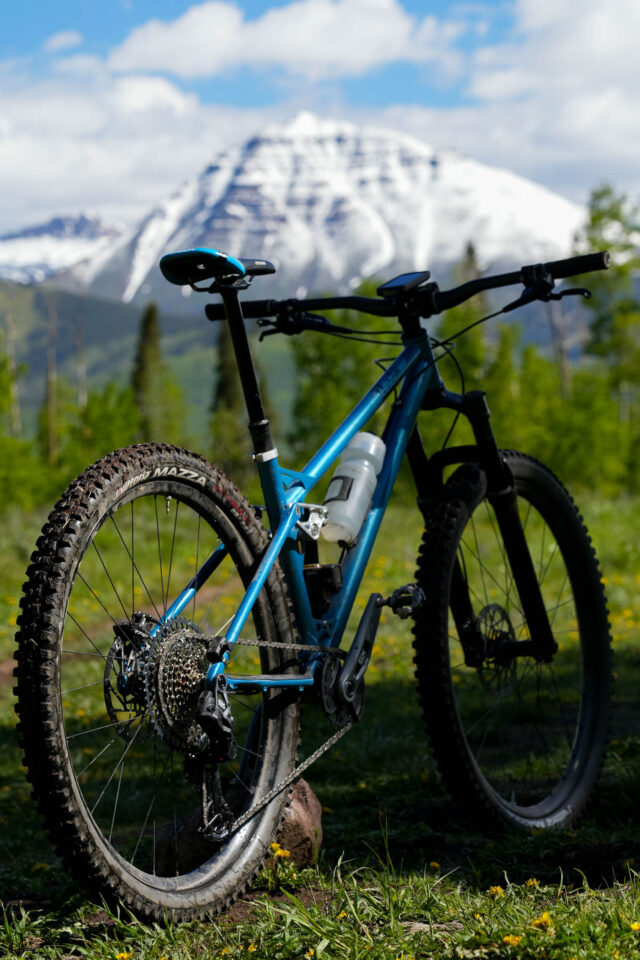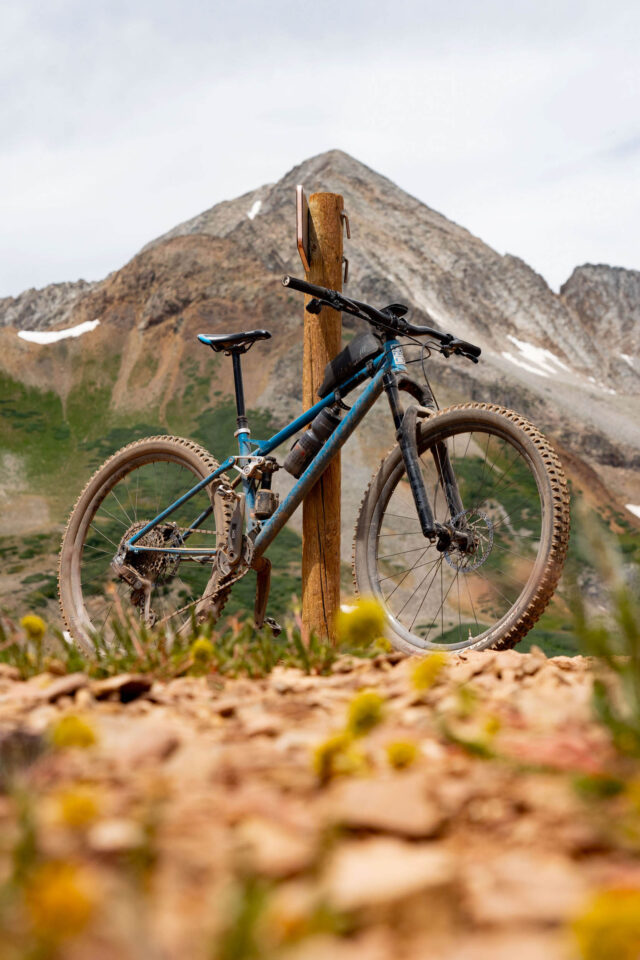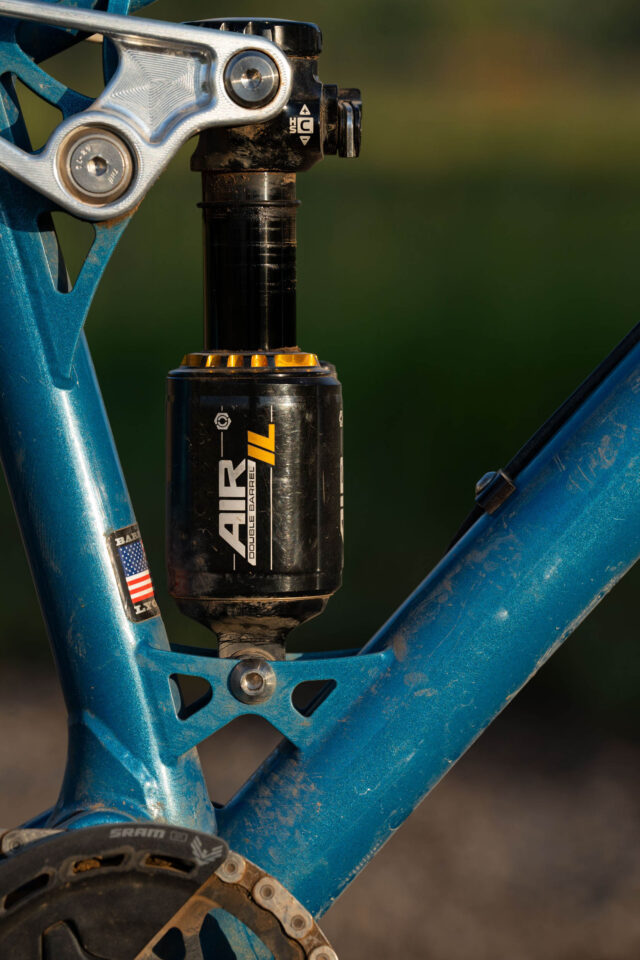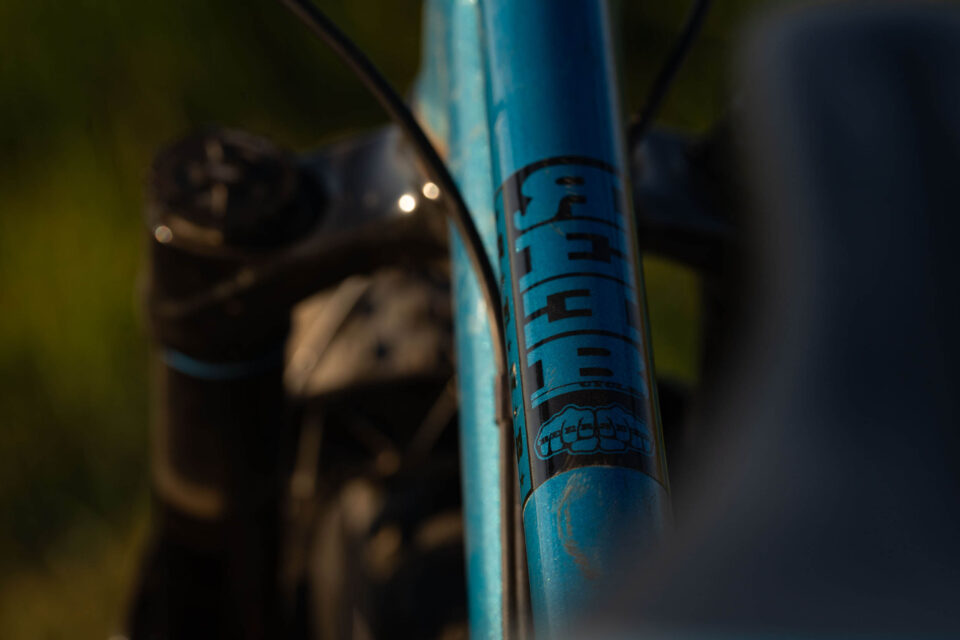REEB SST Review
Over the last few months, Neil has put a ton of miles on the REEB SST, a unique steel full-suspension bike with 120mm of rear travel. In this review, he dives into what makes this Colorado-made bike stand out among a sea of options and discusses its distinctive geometry, specifications, and pedaling performance…
PUBLISHED Aug 29, 2023
There are usually only two options when it comes to full-suspension bike frames: aluminum or carbon. However, a few small companies and frame builders have been quietly making steel fullies for a while, and over the last few years, we’ve seen an uptick in brands trying out this time-tested material for full-suspension bikes. That includes the REEB SST, which was announced late last year. After months of trail riding and bikepacking, we put together our detailed REEB SST review covering the bike and how it performs in a variety of conditions. Watch the video review below alongside a written version, a selection of photos, pros and cons, and specifications.

Back in the early 2010s, Dale, the founder of Oskar Blues, had his bike stolen. He decided he didn’t want to buy another bike made overseas after that incident and instead built a bike by hand in the United States. As a result, REEB was born in 2012 in the same barn where Oskar Blues started in Lyons, Colorado. That pretty much sums up where the name come from… REEB is just BEER spelled backwards.
REEB SST Review Video
Tech Specs
The name SST is pretty straightforward, too. It stands for Steel Short Travel. REEB’s 120mm rear travel bike is built around a 130-150mm fork with clearance for 29 x 2.5″ tires, and REEB says it bridges the gap between their playful and capable hardtails and the Steezl, their big-travel bike built around 155mm of rear travel. Like all REEB bikes, steel is the main ingredient; the SST is made from a proprietary 4130 Chromoly tubeset. Even more interesting than the fact that it’s a steel full-suspension bike is their use of 3D-printed stainless frame components. Texas-based Cumberland Additive supplied the SST’s hollow chainstay yoke, seat stay clevis, and rear dropouts. REEB states these parts offer a lighter and stiffer alternative to machined parts. And by using these technologies and welding in house, REEB says they can customize geometry and have surprisingly quick turnaround times for prototyping.
You’ll notice some gussets on top and below the top tube. This is where Reeb installed their aluminum rockers for their exclusive four-bar suspension system. The design uses the Horst Link concept but with a flex stay. By adding the flex stay, they can remove the rear pivot commonly found on a Horst Link Pivot design. This keeps weight down and alleviates the need to service an extra pivot point on the bike.
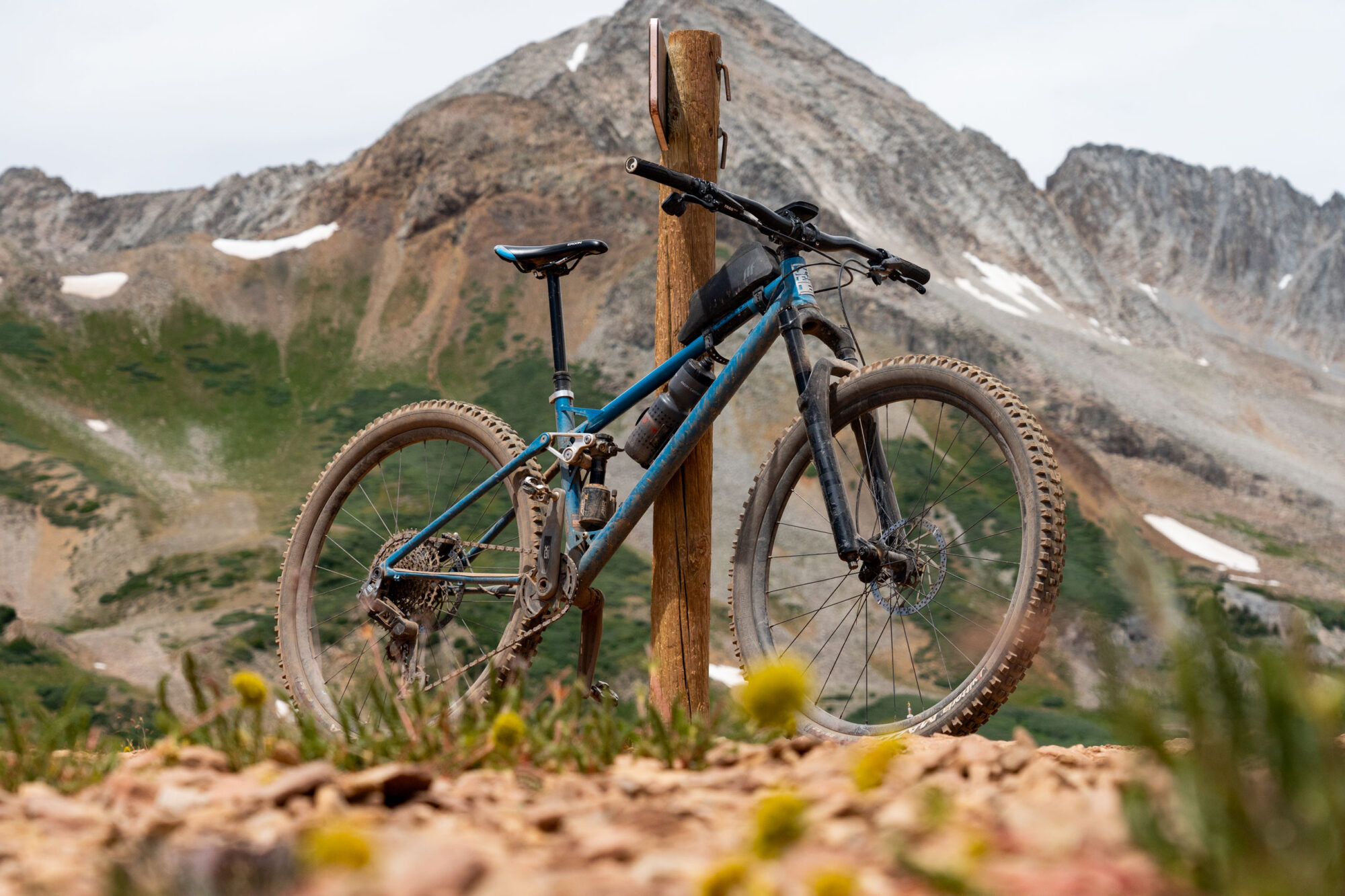
Fit and Geometry
The boost-spaced SST comes in a variety of sizes from XS to XL. I’m 5’9.5″ (176.5cm) tall and tested a medium, which was an excellent fit for me. The medium comes with a 460mm reach and a 614.5mm stack, which aligns with some of the longer-travel bikes I have pedaled. And while it was not super upright, it never bothered me too much on big days.
I’ve owned a few bigger-travel bikes in the 140mm rear travel range, but I’ve never kept one very long as I have struggled to find one efficient enough for all-day or multi-day rides. And the downside with shorter travel (100-120mm) bikes is that once I crest a hill, I typically get underbiked on more demanding descents. But this is where the SST shined; it felt much bigger than a 120-140mm bike. This can be credited to a few things, including its relatively slack 65.5-degree head tube angle and long 1207.5mm wheelbase. The bike comes with 435mm chainstays, which isn’t much different than other bikes in this category—very similar to the 436mm chainstays that the 115mm rear travel Revel Ranger I tested has. The SST’s 773-millimeter front center (from BB to the front axle) is what makes it stand apart from other 120mm offerings.
| Metric | XS | S | M | L | XL |
|---|---|---|---|---|---|
| A. Seat Tube (C-T) | 380 | 380 | 410.5 | 425 | 450 |
| B. Effective Top Tube | 580 | 596 | 612.5 | 637 | 668 |
| C. BB Drop | 40F/21R | 30 | 30 | 30 | 30 |
| D. Head Tube Angle | 64.5° | 65.5° | 65.5° | 65.5° | 65.5° |
| E. Head Tube Length | 90 | 95 | 100 | 110 | 120 |
| F. Effective Seat Tube Angle | 75° | 76° | 76° | 76° | 76° |
| G. Standover | 715 | 740 | 755 | 760 | 760 |
| H. Chain Stay Length | 435 | 435 | 435 | 435 | 435 |
| I. Front Center | 739 | 756 | 773 | 815.6 | 832 |
| J. Reach | 420 | 445 | 460 | 480 | 510 |
| K. Stack | 590 | 610 | 614.5 | 623.5 | 634 |
| L. Wheelbase | 1176 | 1189 | 1207.5 | 1232.5 | 1264.5 |
| M. Shock Eye to Eye (Trunnion) | 185×50 | 185×50 | 185×50 | 185×50 | 185×50 |

The frame comes with a very sloping top tube, so standover will certainly be a non-issue for most, but because of this, the medium bike comes equipped with a massive 210mm of dropper travel. The downside here is that it has a small front triangle, keeping frame bag space to a minimum.
Climbing/descending
The bike remains very active with REEB’s suspension design, though it’s not the fastest climber considering its overall length and weight; it weighs 33 pounds as seen here. With the steeper 76-degree seat tube angle, it helped me stay relatively balanced, allowing me to plow through some technical sections with the rear wheel maintaining plenty of grip over the rough and loose sections. I was surprised that it could clean a lot of tricky, challenging sections of trail, even at slow speeds. Only on the steepest climbs would I need to lean over the bars and pedal out of the saddle to keep the front wheel grounded. It exhibits a little self-steering at slow speeds, and while that may sound like a negative, I found that it helped me navigate tight switchbacks with ease despite its longer wheelbase, which was a pleasant surprise.
The SST loves to be active, so when the bike finds flat dirt roads, pavement, or even smooth singletrack, it’s not all that excited about it. It will get you from A to B, but with little enthusiasm. I often turned the climb switch on the Cane Creek Double Barrel inline rear shock to stay as efficient as possible.
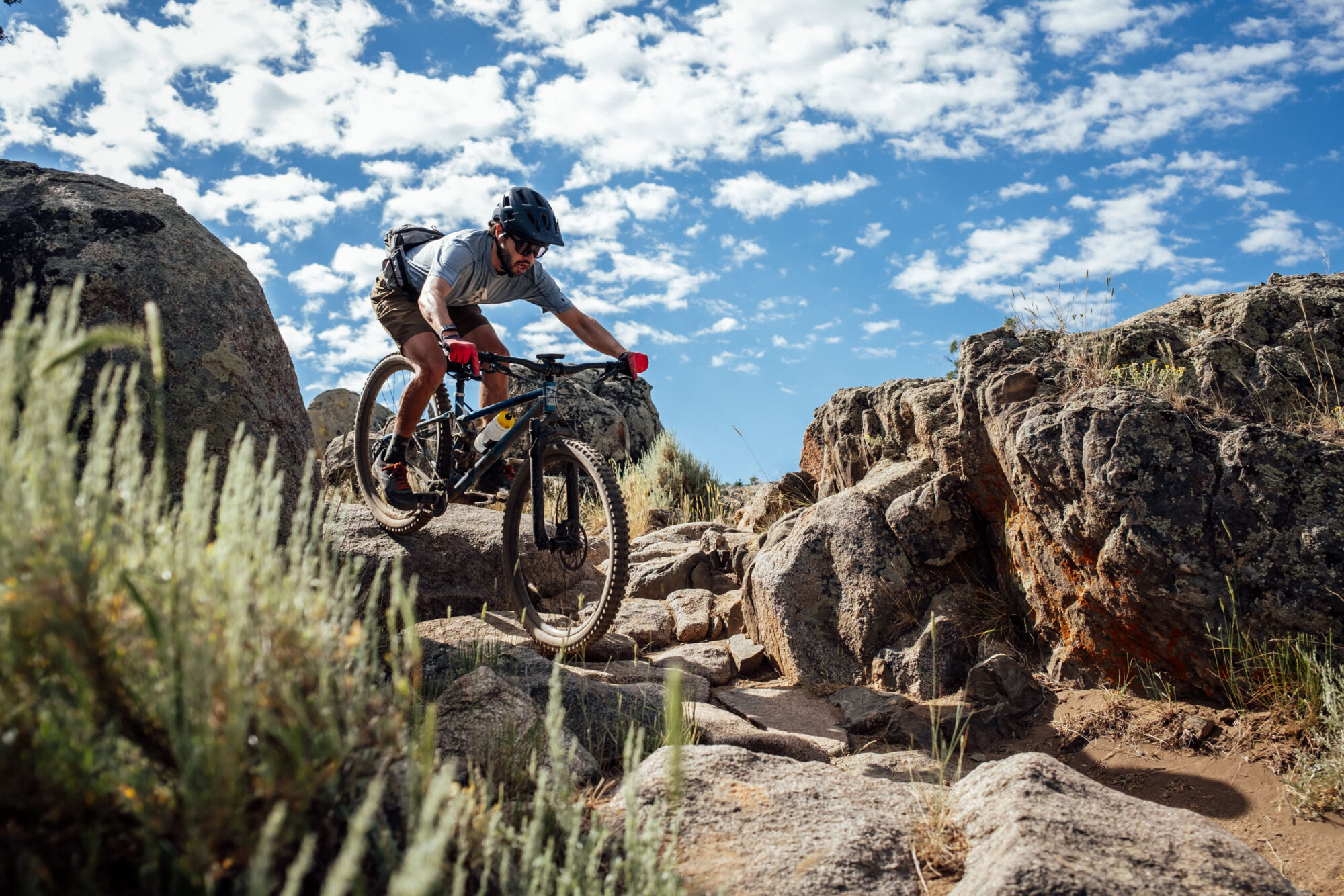
The SST turns into a totally different beast when gravity is on your side. It was designed to descend, seeks speed, and is stubborn in that way. Speed brings out a stable, nimble, and go-get-it attitude. When it came to larger hits or just letting off the brakes and allowing the bike to do its thing, it had very playful characteristics. High-speed corners were effortless, and it had no problems holding a line or eating up rock gardens. Simply put, it fell much bigger than a 120mm bike.
On descents during my first week with the bike, I noticed the occasional jarring compression after hitting features such as larger rocks or roots. I wondered if it was the nature of the steel frame as opposed to a damped carbon feeling. Or coming from a split-pivot bike, maybe it was a point of comparison. Perhaps the Cane Creek rear shock needed to be dialed in. Whatever it was, it worked itself out or I got used to it.
Overall, the SST rides like a dream. I certainly wouldn’t use it to PR a climb, but don’t be surprised if you clean a section of trail that has been giving you fits for a while. And when it comes to descending, the bike truly encourages you to ride the trail and not the brakes, even through chunky, wet, dry, or loose trail.
REEB SST Build Kit
REEB offers the SST in various builds with air or coil shocks. Or you can buy just the frame, a frame and fork set, or a few build kits that include a GX and XO transmission, as the bike is built around SRAM’s Universal Derailleur Hanger (UDH). They also offer custom builds, which is pretty nice. The SST I tested was based on the “SST AIR X0 EAGLE T-TYPE BUILD” that’s listed below, but they subbed a few parts. It had a SRAM XO Eagle drivetrain, a Cane Creek Helm fork, and Double Barrel rear shock. It took some time to dial in the rear shock, but I was delighted with how well it complemented the bike once I did.
- FRAME: REEB SST, Size Medium, welded in USA
- FORK: Cane Creek Helm Air, 140mm
- SHOCK: Cane Creek DBair IL, 120mm
- HEADSET: Cane Creek Hellbender 70
- STEM: Industry Nine I35, 40mm
- HANDLEBAR: OneUp Carbon
- GRIPS: OneUp lock on
- BRAKES: TRP Trail Evo
- ROTORS: TRP RS01E 203F/180R
- SEATPOST: OneUp V2/OneUp Remote
- SEATPOST COLLAR: REEB bolt on
- SADDLE: Chromag Lift
- WHEELSET: Industry Nine 1/1 Trail S
- TIRES: Vittoria Mazza Trail 2.4
- CRANKSET: SRAM X0 Eagle T-Type
- CASSETTE: SRAM X0, XS-1295, 10-52, 12 spd
- SHIFTER: SRAM X0 AXS
- DERAILLEUR: SRAM X0 Eagle T-Type AXS, 12 spd
- CHAINRING: SRAM X0 Eagle w/bashguards
The bike came with an Industry Nine stem and 1/1 wheels with carbon 30mm hoops and Vittoria Mazza tires. The Mazzas offer excellent grip but aren’t the best rollers. Tires are one thing I’d change down the road. The SST also had a very easy-to-service OneUp V2 dropper and carbon handlebar. I swapped a similar 800mm bar since the OneUp bar was cut down. Finally, my favorite component on the bike is the incredibly powerful TRP Trail Evo brakes. I’m super impressed with their power and modulation, and with 180mm front and rear rotors, I had no issues with stopping power.
Bikepacking
When we talk about the ideal bike material for bikepacking, it’s hard to argue against steel. It provides more mounting options and frame triangle space when compared with carbon, and it’s strong. Heck, REEB even sent this media test bike with a small dent on the downtube. It’s a testament to what steel is made to do. And while the SST’s frame space and overall geometry might not seem like a go-to option for a bikepacking bike, it certainly works. I loaded it up with some bags and recently went out on an overnighter.
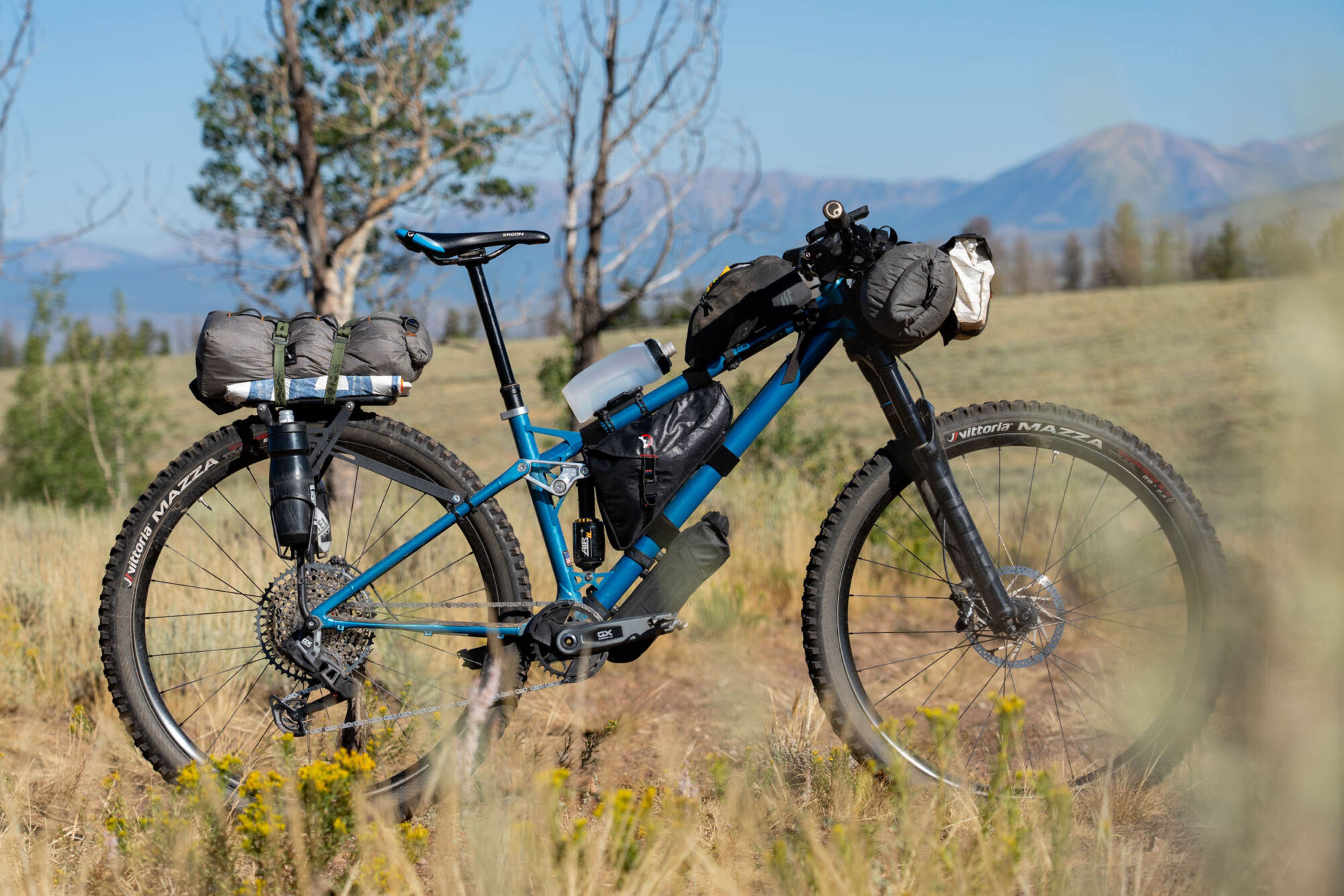
As mentioned, the bike is not light despite the flex stay, 3D-printed parts, and relatively high-end components. And so the overall weight of my loaded bike with everything and a few extras came to 53 pounds. The already grounded bike felt much more planted when loaded, giving me loads of confidence and grip. The higher trail, paired with a load on the front bars, gave it a funky feeling up front, but outside of that, it felt like any loaded bike, and the added weight gave the tubeset some new life.
As far as bikepacking provisions, there are few on this particular bike, aside from it being a durable frame. There is one set of bottle mounts inside the main triangle, but this bike does’t have braze-ons on the under side of the downtube. That said, it’s now a stock feature on the SST. The bike also comes with external routing, except for the dropper post.
I used an Old Man Mountain Elkhorn rack and fit kit on this frame, which has been my go-to for full-suspension bikes, and it worked great. I also squeezed a Revelate Designs Hopper in the frame triangle as my Outer Shell wedge didn’t fit. Overall, if you bikepack with the SST, you will need to be creative with storage, but that’s what bikepacking is all about.
What I would change
Because the bike performed so well, I wouldn’t change much. But if I’m being picky, I might raise the top tube so it didn’t slope as much to add more front triangle space. I also wouldn’t mind a shorter front center, so steepen the head tube angle and shorten the reach. Fortunately, REEB offers custom headtube angles, axle-to-crown measurements, and reach lengths, which is pretty neat.
- Model Tested: REEB SST, Size Medium,
- Actual Weight (as tested): 14.97 kg (33 pounds)
- Place of Manufacture: Colorado, USA
- Price: $8,495 (SST Air X0 Eagle T-Type Build)
- Manufacturer’s Details: REEB Cycles
Pros
- The REEB SST is a short-travel bike that never quite feels undergunned
- Made with a unique manufacturing that seems to be very durable
- Offers good support for small and big hits
- The rear wheel stays planted, helping climb some very steep and technical trails
- Gives you a lot of confidence to keep off the brakes
- Customizable options
Cons
- Small frame triangle space
- Not very exciting on flat terrain and not the fastest climber
- On the heavier side
- Expensive
Wrap Up
I promised REEB a six-week turnaround time on this review, but I’ll admit, I was having waaay too much fun with it. I’ve had the SST since early June, and I’ve had an absolute blast on this thing, pedaling it hundreds of miles on bikepacking trips, six-hour high alpine singletrack rides, and quick after works spins. If you’re a fan of steel and love the hardtail platform but are looking for a full-suspension option, the SST is such a natural progression. You will still get the performance of a full-susser but with the durability of a steel frame. Plus, the lines are so clean and beautiful, and it offers much more then a standard 120mm short travel trail bike. Unfortunately, the SST is a bit of investment, although it doesn’t fall too far out of line with a high-end carbon fiber bike. The build I tested comes in at around $8,500, and the frameset starts at $3,595 and up.
Please keep the conversation civil, constructive, and inclusive, or your comment will be removed.







